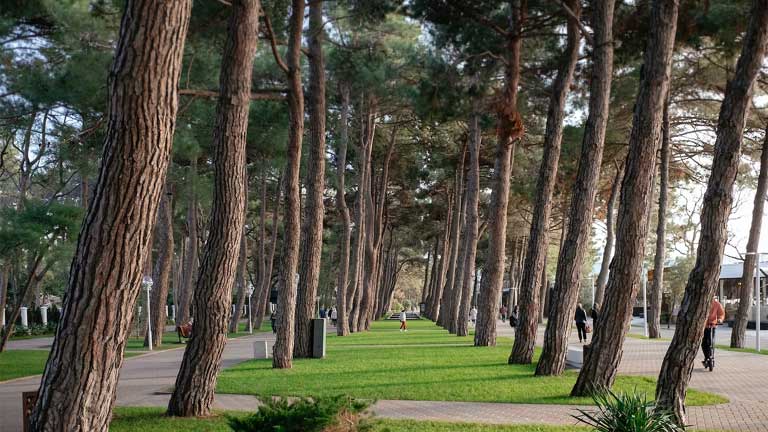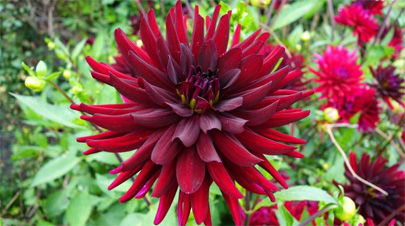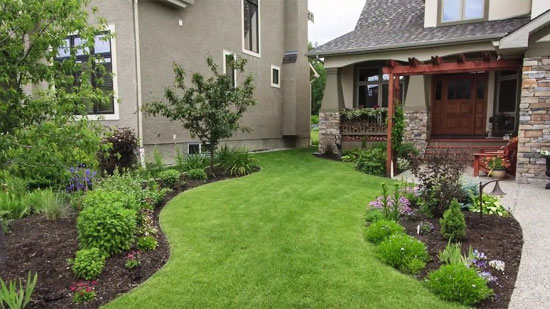
Sustainable landscaping is becoming increasingly important as we strive to create environmentally friendly and aesthetically pleasing residential areas. Within this context, tree management plays a crucial role in maintaining a sustainable landscape. Trees not only enhance the beauty of our surroundings but also provide numerous environmental benefits. In this blog post, we will explore the importance of tree management in sustainable landscaping practices for residential areas.
The Role of Trees in Sustainable Landscaping
Trees are valuable assets in any landscape, offering a range of benefits that contribute to sustainability:
- Environmental Impact: Trees help combat climate change by absorbing carbon dioxide and releasing oxygen through photosynthesis. They also provide shade in the outdoor area which reduces the need for excessive air conditioning during hot summers.
- Water Conservation: Properly placed trees can reduce water usage by providing shade and reducing evaporation from lawns and gardens.
- Wildlife Habitat: Trees provide essential habitats for birds, insects, and other wildlife, promoting biodiversity and ecological balance within residential areas.
- Stormwater Management: Trees absorb rainfall and reduce stormwater runoff, which helps prevent erosion and flooding while allowing water to replenish the groundwater table.
- Air Quality Improvement: Trees filter pollutants from the air, improving air quality and creating a healthier environment for residents.
Importance of Tree Management
Effective tree management is crucial for maintaining healthy and sustainable landscapes. Here are some key aspects of tree management in residential areas:
1. Tree Health Assessment
Regular assessments of tree health are essential to identify potential issues early on. A certified arborist can evaluate the overall condition of trees, detect signs of diseases or pests, and recommend appropriate measures for treatment and care. This proactive approach ensures that trees remain healthy and productive for years to come.
2. Pruning and Maintenance
Pruning is a fundamental aspect of tree management. Proper pruning removes dead, damaged, or diseased branches, improving the tree’s structure and appearance. It also promotes airflow, reducing the risk of fungal infections and other diseases. Regular maintenance tasks such as watering, fertilizing, and mulching are equally important for tree health.
3. Tree Removal and Replacement
In certain cases, tree removal becomes necessary due to disease, damage, or potential safety risks. Professional tree services offer safe and efficient removal of trees when required. These professionals understand the importance of tree preservation, removing trees only when necessary. Additionally, they also offer replacement services. When one tree is removed, another is planted in its place, ensuring the continued benefits of a tree-filled landscape. Local services in Bountiful are dedicated to maintaining the area’s verdant surroundings while ensuring the health and safety of its residents.
4. Tree Protection During Construction
During construction or landscaping projects, it is essential to protect existing trees from potential damage caused by heavy machinery, excavation, or changes in soil grade. Installing barriers or fencing around trees can help preserve their root systems and prevent unnecessary stress.
5. Sustainable Tree Selection
When adding new trees to the landscape, it is advisable to choose native or adapted species that are well-suited to the local climate and soil conditions. These trees require less maintenance, irrigation, and pest control, reducing the overall environmental impact.
Best Practices for Sustainable Tree Management
Implementing sustainable tree management practices can enhance the effectiveness of residential landscaping initiatives. Here are some best practices to consider:
- Mulching: Apply organic mulch around the base of trees to conserve moisture, suppress weed growth, and improve soil health.
- Watering Techniques: Use proper watering techniques, such as deep watering at the base of trees to encourage deep root development and reduce water waste.
- Integrated Pest Management (IPM): Adopt IPM practices to minimize pesticide use and prioritize non-chemical methods for managing pests, diseases, and invasive species.
- Soil Health Maintenance: Implement sustainable soil management practices, including composting, to improve soil fertility and structure. Healthy soil promotes strong root growth and overall tree health.
Sustainable landscaping practices play a vital role in creating environmentally friendly and visually appealing residential areas. Within this context, effective tree management is essential for maintaining healthy trees that enhance the sustainability of the landscape. By regularly assessing tree health, implementing proper pruning and maintenance, protecting trees during construction, and selecting appropriate species, we can promote sustainable tree management in residential areas. Let us all contribute to the beauty and sustainability of our landscapes by prioritizing the management of trees for a greener and healthier future.




